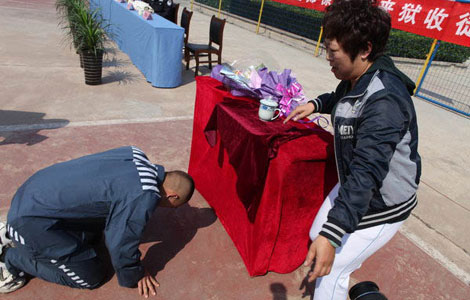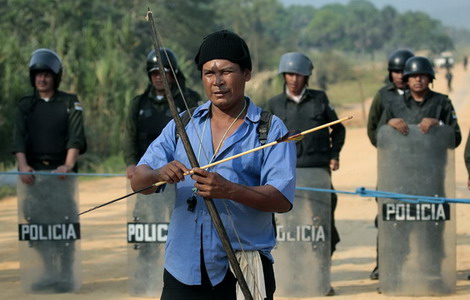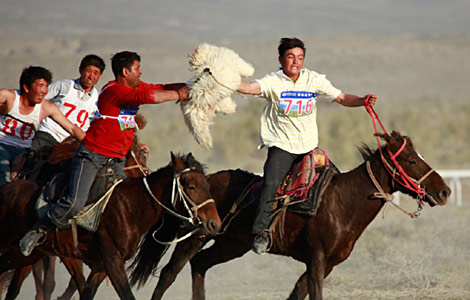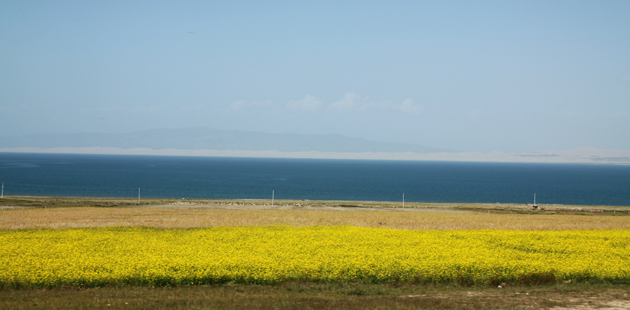Nomadic Tibetans resettled to protect Yangtze Rivers
Updated: 2011-09-23 22:42
(Xinhua)
|
|||||||||||
XINING - Six years after leaving his ancestral home on the grasslands of the Qinghai-Tibetan Plateau, Tsering Dondrup says he is still trying to adapt to his new life in town.
Dondrup has just finished sculpting a stone yak that he can sell for 900 yuan ($141). His wife, daughter and son-in-law have all learned to sculpt, as the craft provides income for the entire family.
Last year, the family of nine earned more than 20,000 yuan by making and selling sculptures.
Dondrup, 45, is one of 50,000 Tibetan herders who had to give up their nomadic life in the region of Sanjiangyuan, the source of China's three major rivers: the Yangtze, the Yellow River and the Lancang River.
China started moving residents out of the 150,000-square-km region in 2005, when the central government started a 7.5 billion yuan project to ecologically restore areas that had been damaged by excessive herding.
The former herders now live in newly built communities near town centers. "We have better access to housing, medical services and vocational training now," Dondrup said.
In 2009, a stone sculpture production company set up shop in Dondrup's community in Zekog county, jointly funded by the government and a collective investment from 100 local households.
"The community earned 1.15 million yuan by selling stone sculptures last year. Earnings have already topped 800,000 yuan in the first six months of this year," said community leader Tsering Namgyal.
To help the herdsmen adapt to city life, the provincial government offers vocational training and has set up a special fund to encourage them to run small businesses, said Li Xiaonan, deputy director of the Sanjiangyuan Ecological Preservation and Construction Office.
However, few communities have established marketable businesses like Dondrup's community.
In a migrants' village in Maqen county, located in Qinghai province's Golog Tibetan autonomous prefecture, more than 150 households weave and sell Tibetan-style carpets for a living. However, the village's only carpet factory went bankrupt and closed last October.
"The factory couldn't make ends meet because of the rising prices of raw materials," said village official Ning Jie.
Most of the new migrants still miss their nomadic lives, yearning to listen to the yaks and tread the grasslands of their ancestral home.
"My family lived comfortably by herding yaks and sheep in the pastures," said 60-year-old migrant Geche.
Geche's family now lives on an annual government subsidy that is "less than the price of two yaks. Everything is so expensive here in town," Geche said.
However, it is no longer possible for the migrants to return to their old lives. "The grasslands in my hometown were blocked off by the government. Besides, I don't have money to buy yaks and sheep anymore," Geche said.
Geche said that he hopes his sons will eventually settle down in town; this is the main reason why he agreed to be relocated in the first place. However, a lack of professional skills has forced many young migrants out of the towns.
Geche's eldest son has moved to a different pasture far from the town, as he found it too difficult to secure a job. He now herds cattle for local families and makes a meager monthly salary of 700 yuan.
Last year, the local government spent an average of 900 yuan per migrant on vocational training, eventually pushing the region's employment rate to 30 percent, said Ren Mingxia, deputy director of the Sanjiangyuan office of Yushu Prefecture.
Sun Faping, vice president of the Qinghai Academy of Social Sciences, said that securing a job and surviving in a new environment remains the biggest challenge for the former nomads.
"It will take two or three generations to solve all the problems they are facing now," said Li.
Hot Topics
Organ transplant bonds mother and son
Editor's Picks

|

|

|

|

|

|







